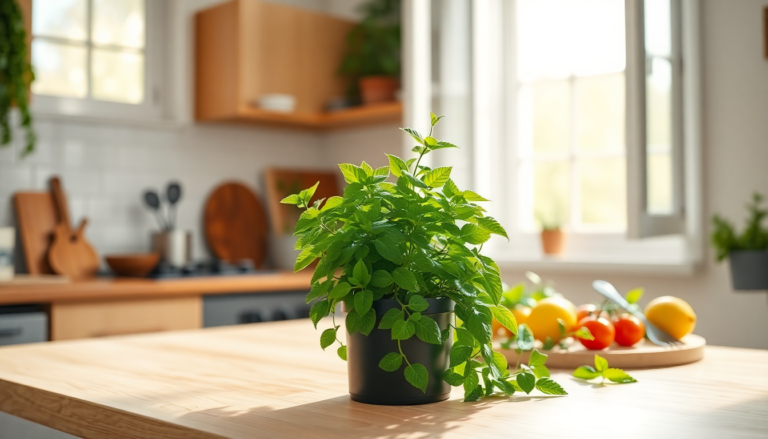Argomenti trattati
The benefits of growing mint at home
If you’re looking to enhance your culinary skills, one of the quickest ways to do so is by incorporating organic, home-grown ingredients into your cooking. But what if you don’t have space for a full vegetable garden? Growing herbs is a fantastic alternative, and mint is one of the best options for beginners. This hardy herb not only adds a refreshing flavor to dishes but is also incredibly easy to care for.
Mint comes in various types, such as peppermint and spearmint, allowing you to choose based on your flavor preference. It can thrive indoors on a windowsill or outdoors in your garden, making it a versatile choice. Despite its reputation for being low-maintenance, there are still essential care tips to ensure your mint grows successfully. Let’s dive into how to cultivate this popular herb both indoors and outdoors.
Choosing the right type of mint
While peppermint and spearmint are among the most popular varieties, they are not the only ones to consider. Other types, such as chocolate mint or apple mint, can also be delightful additions to your herb garden. Each variety has its unique flavor profile, so don’t hesitate to experiment with different types to see which you prefer.
Mint thrives in various USDA Plant Hardiness Zones, but it is particularly suited to regions that experience mild winters. If you’re unsure of your zone, the USDA Plant Hardiness Zone Map can help you determine the best varieties for your area. This knowledge can guide you in selecting the right mint for your indoor or outdoor garden.
Ideal conditions for growing mint
Mint prefers to grow in partial shade, thriving in the morning sun while avoiding the harsh rays of the afternoon. Position your mint plant near an east- or west-facing window for optimal light exposure. Consistent light is crucial, but be cautious of direct sunlight for prolonged periods, as it can scorch the leaves.
When it comes to soil, mint enjoys a rich, well-draining mix that retains moisture without becoming soggy. Water your mint when the top inch of soil feels dry to the touch. Signs of wilting indicate that your plant needs more water, while dark leaves may suggest overwatering. In sunny conditions, it’s best to water in the morning to prepare your mint for the day’s heat.
Planting and spacing your mint
When planting mint, spring is the best time to get started, just after the last frost. Mint grows quickly, so you won’t have to wait long before you can begin to enjoy its fresh leaves in your cooking. To prevent mint from taking over your garden, plant it in containers or dedicated garden beds, leaving at least 18 to 24 inches of space between plants. This spacing helps control its invasive growth habit.
For container gardening, consider using pots that are at least 12 inches deep. This depth accommodates mint’s root system while keeping it contained. If you decide to plant directly in the ground, be sure to monitor its spread to prevent it from overwhelming other plants.
Harvesting your mint
Once your mint plants reach a height of three to four inches, you can start harvesting. Pinch off the stems at the base of the leaves for the best flavor; the youngest leaves tend to be the most aromatic. For larger harvests, consider cutting the entire plant back to about an inch above the soil, allowing it to regenerate for future use. Timing is essential, so aim to harvest on dry, sunny mornings for the best flavor.
Winter care for mint plants
One of the many advantages of mint is its hardiness. If you’ve planted your mint outdoors, trim it back close to the ground before winter arrives and cover it with mulch or leaves to protect it from frost. While mint can survive harsh winters, bringing potted plants indoors can ensure they remain healthy until spring. Just place them in a sunny location and continue your regular care routine.
Final thoughts on growing mint
Mint is an excellent choice for novice gardeners eager to grow their own herbs. With its minimal care requirements and delicious flavor, it’s a rewarding plant to cultivate. Whether you use it in teas, salads, or desserts, home-grown mint can elevate your culinary creations. Start your mint garden today and enjoy the fresh taste straight from your own home!

